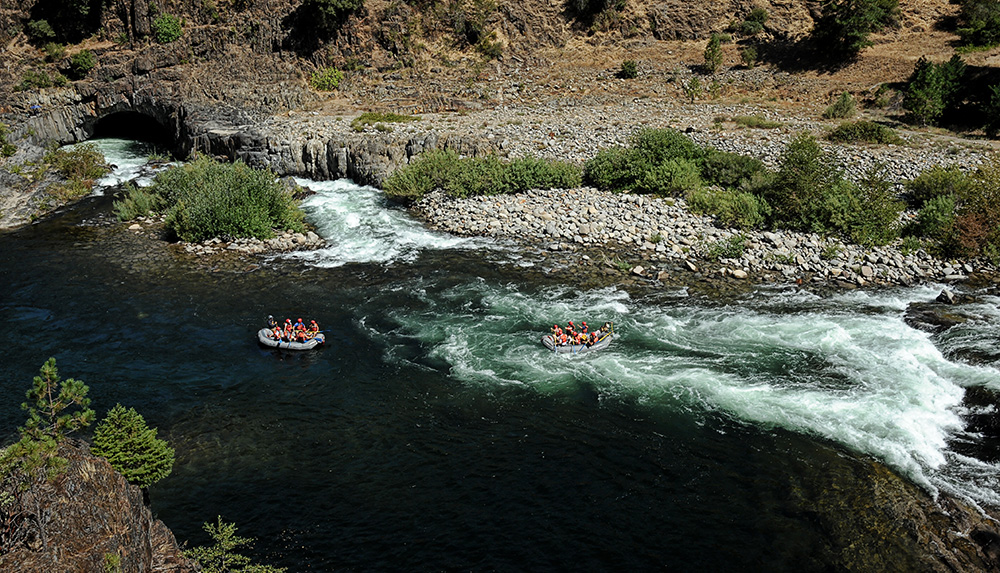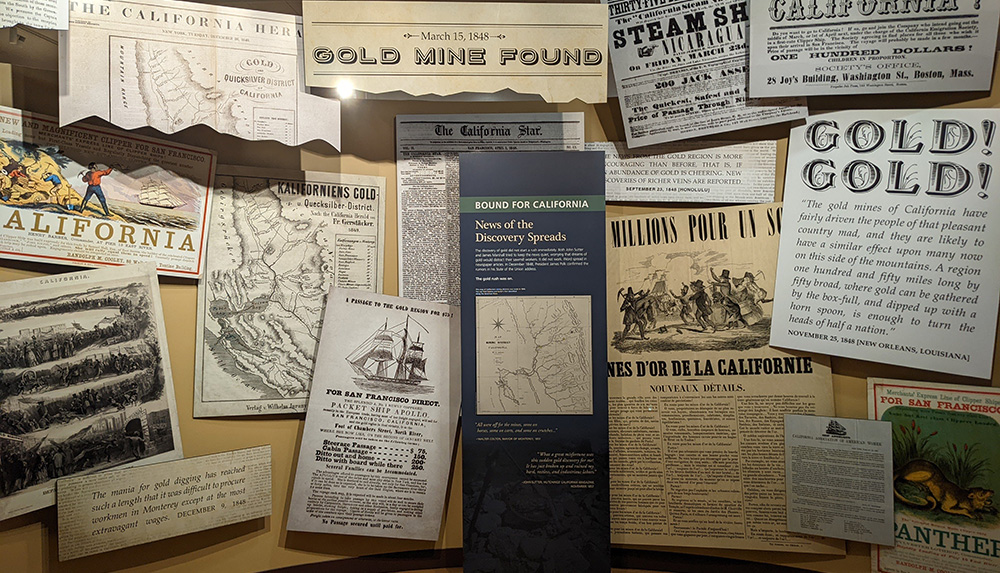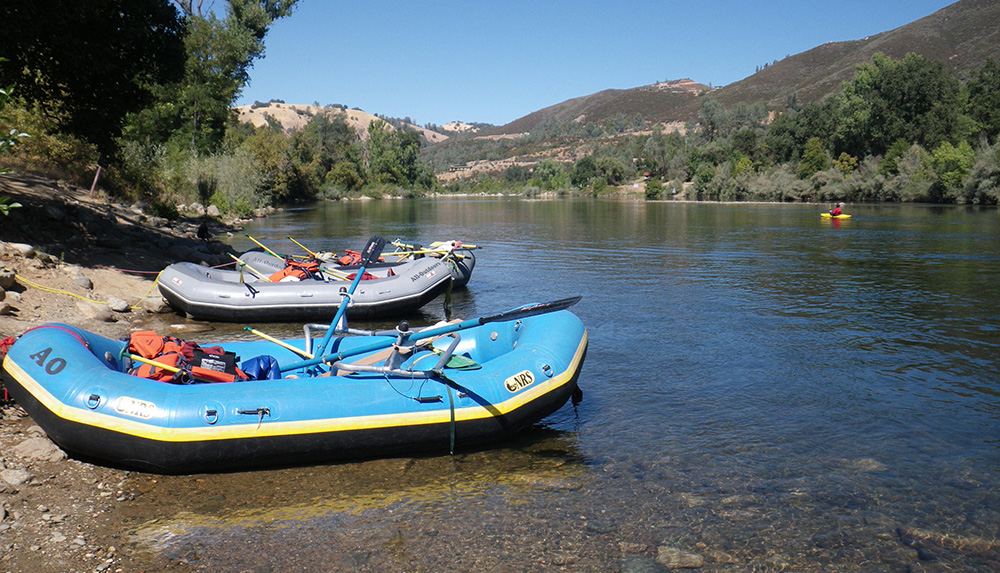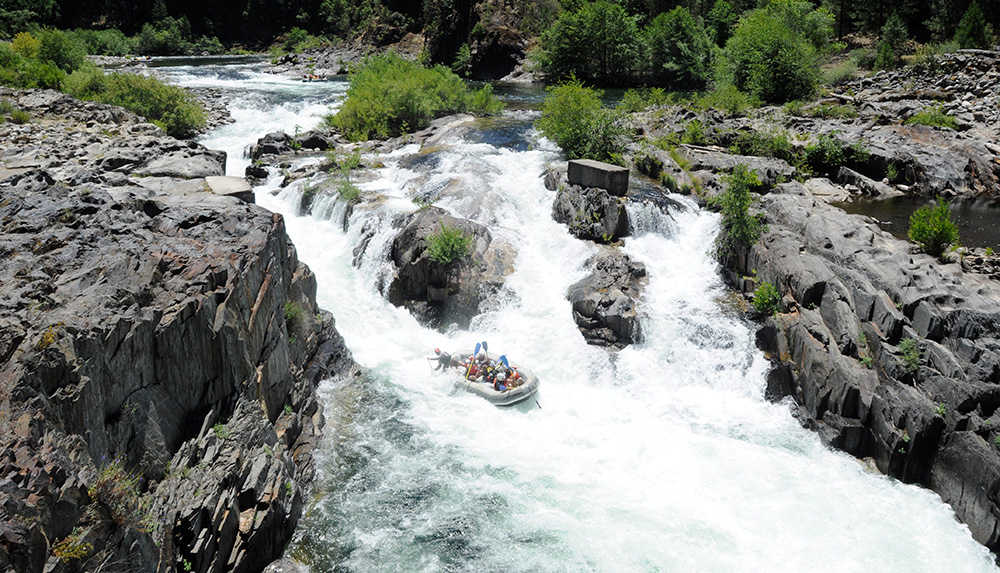Raft Through California Gold Rush History
Posted August 30, 2022 by Lenka Bostian
California river rafting trips have so many facets! Most people consider a river trip to be a great opportunity to spend time outdoors with family and friends away from the daily grind. Some may go for the physical aspect hoping for a fun way to get a workout in (and they will get it!), while others appreciate being able to see the beautiful California landscape from a new vantage point. Those who enjoy camping, like doing it in places they would not have access to otherwise, with an added bonus of catered meals and miles of whitewater in between. The one facet that may not be so intuitive at first is the fact that rafting on California rivers immerses you directly into the rich history of the Golden State.

Rivers in general are the lifelines of civilizations and in present day California we are reminded of their importance daily. Back in the mid-19th century, however, a substance other than precious water gave California rivers and the surrounding areas of the Sierra Nevada foothills new relevance…GOLD!
While most of the 10 California Rivers we raft on have some gold mining related history, the two rafting rivers with the most profound Gold Rush significance are the South Fork and the Middle Fork of the American River.

The Gold Discovery River: South Fork of the American
The Gold Fever of 1848 was sparked on the very same river where thousands of rafters float down each year – the South Fork of the American River. When carpenter James Marshall discovered flecks of gold in the tailrace of the sawmill he was building to provide wood for John Sutter’s Fort in today’s Sacramento, he couldn’t have known his discovery would lead to one of the largest migrations in the world. Eventually, thousands of forty-niners flocked to what the native Nisenan Indians called “Cullumah”, meaning peaceful valley. Today we know it as Coloma.
Among those immigrants coming with a vision of richness and a better life were many from China and Latin America. When you raft on the Upper section of the South Fork, also called the “Chili Bar” after the prominent settlers group in that area, you will pass right by the gold discovery site itself. Visit Marshall Gold Discovery State Historic Park before or after your river rafting trip where you can tour outdoor and indoor exhibits to learn more about the area’s history that is fascinating – both in a good way and the not-so-good way – and even try your own hand at gold panning on the river shore.

One of the Richest Rivers in the West: Middle Fork of the American
If you ask anyone who has rafted the Middle Fork of the American River about the most memorable rapid of their trip, you will likely get the same answer every time: Tunnel Chute Rapid! It’s one of the most unique rapids in the world – an 80-foot human-made chute leading straight into a large 90-foot rock tunnel. Now, why would people go into so much trouble to create this iconic whitewater feature? Gold is the answer!
During the Gold Rush, miners working along the shores of the Middle Fork American River discovered large gold deposits in a mile-long bend in the river. They realized if the water could be diverted from this section, it would be much easier to get to the gold. The determined miners set out on the dangerous task of blasting a chute and a wide river tunnel to change the course of the river and unintentionally created what today is the highlight of every Middle Fork rafting trip. The dried up river bend ended up being one of the most lucrative gold sites in California.

After a rafting trip is over, the smiling faces of rafters young and young at heart will tell you that the great outdoors is a much more fun environment for a history lesson than any classroom! This captivating facet of a rafting trip on the American River makes for a well-rounded adventure that is hard to match elsewhere. Are YOU planning your whitewater rafting trip / California Gold Rush history lesson yet?